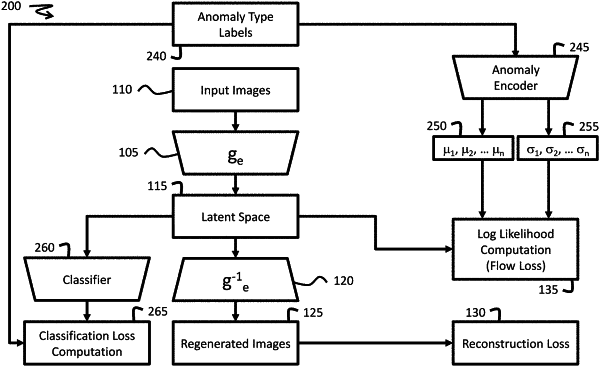| CPC G06V 10/469 (2022.01) [G06F 18/2155 (2023.01); G06F 18/2415 (2023.01); G06N 3/02 (2013.01)] | 16 Claims |

|
1. A computer-implemented method for identifying anomalies in an object, comprising:
supplying, to an image encoder of a system, an input image of the object, the input image of the object containing zero or more anomalies;
generating, at the image encoder, an image model; and
applying the generated image model to an image decoder of the system, the image decoder forming a substitute non-anomalous image of the object, differences between the input image of the object and the substitute non-anomalous image of the object identifying zero or more areas of the input image of the object that contain the zero or more anomalies;
wherein the system implements a flow-based model;
wherein the system has been trained using (a) a set of augmented anomaly-free images of the object applied at the image encoder and (b) a reconstruction loss calculated based on a norm of differences between each augmented anomaly-free image of the object and a corresponding output image from the image decoder;
wherein:
the flow-based model forms a Gaussian model in which errors have a null mean and a predetermined standard deviation;
the system has been trained in unsupervised mode by supplying the set of augmented anomaly-free images of the object to the image encoder and by using the mean and the standard deviation of the flow-based model;
the system has been trained further by calculating a log-likelihood loss based on the mean and standard deviation of the flow-based model;
the log-likelihood loss is calculated in part based on a ratio of an output of a current layer of the flow-based model over an output of a previous layer of the flow-based model; and
the system has been trained further by calculating a regularization loss based on a ratio of the output of the previous layer of the flow-based model over the output of the current layer of the flow-based model.
|